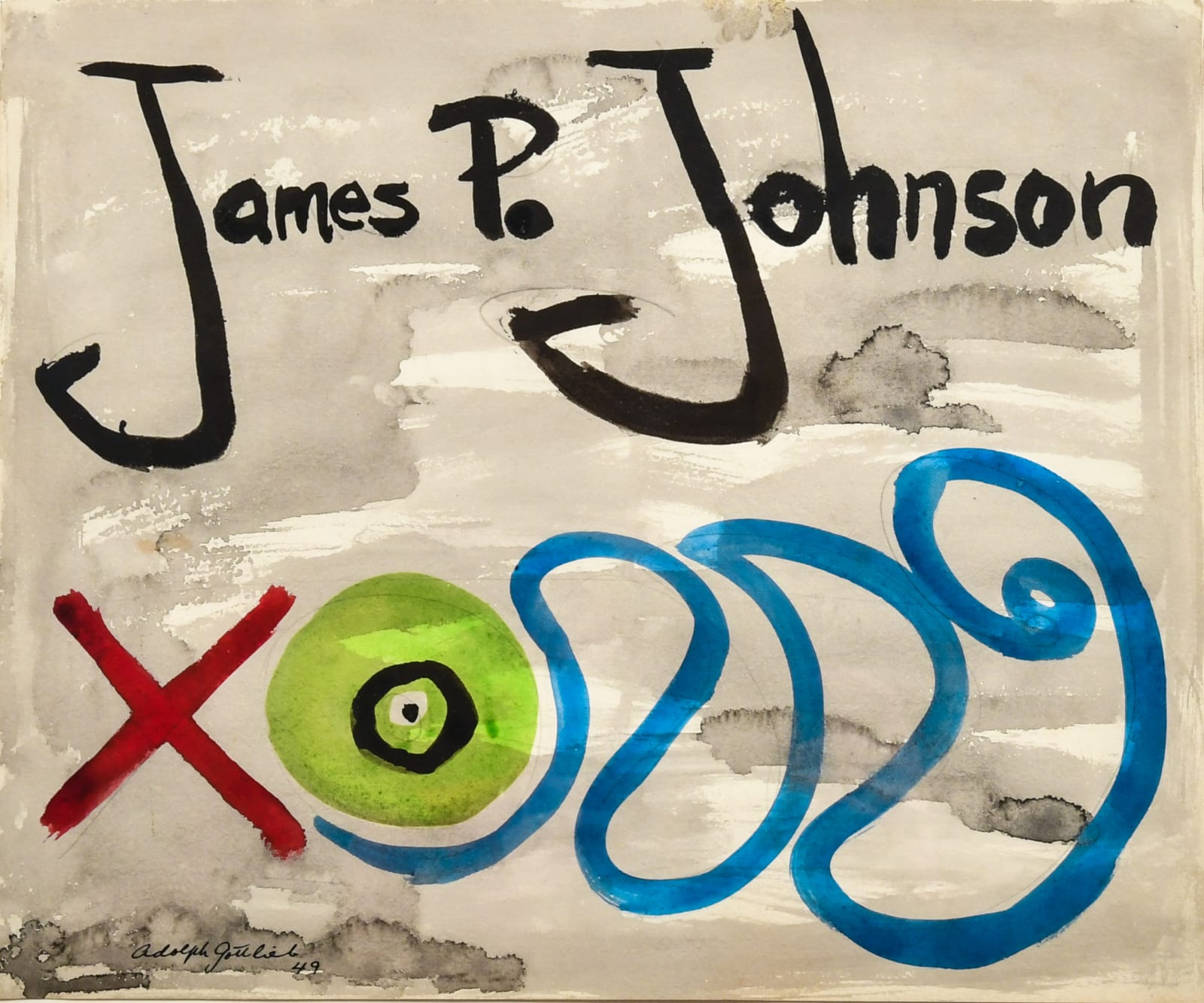
Adolph Gottlieb American, 1903-1974
25.4 x 30.5 cm
James P. Johnson (1894-1955) was known as the father of "Stride" or "Harlem Stride," a blend of Ragtime and Jazz styles that became popular in the '20's. He composed 16 musicals, over 200 songs, a symphony, a piano concerto, two tone poems, and even an opera, mirroring the achievements of George Gershwin but never receiving the same level of recognition. Johnson's music inspired the likes of Thelonious Monk, Duke Ellington, Count Basie, and countless others. He began to earn a living as a pianist by playing cabarets and dance halls until he gained slightly wider recognition and created compositions for black broadway and jazz scores for classical orchestras.In 1949, James P. Johnson was invited by actor and trombonist Conrad Janis to participate in band of what Janis believed to be the Jazz greats - Johnson played piano, along with Henry Goodwin (trumpet),Edmond Hall (clarinet), Pops Foster (bass) and Baby Dodds (drums), with Janis on trombone.
In 1948, Conrad Janis' father Sidney Janis opened his gallery and befriended artists like Gorky andDuchamp in the 1940's, and showed Adolph Gottlieb. It is possible that Adolph Gottlieb and
James P. Johnson became acquainted in the 1940’s through the Janis family. Harold Rosenberg coined the term “action painting” in regards to expressionism, he wrote extensively on the Abstract Expressionist artists during his career as an art critic. In 1949, Rosenberg co-curated an exhibition showcasing these artists with Samuel Kootz that included Gottlieb, de Kooning, Will Baziotes, Gorky, Morris Graves, Hofmann, Motherwell, Pollock, Ad Reinhardt, Rothko, Mark Tobey, and Bradley Walker Tomlin.
Join our mailing list
* denotes required fields
We will process the personal data you have supplied in accordance with our privacy policy (available on request). You can unsubscribe or change your preferences at any time by clicking the link in our emails.